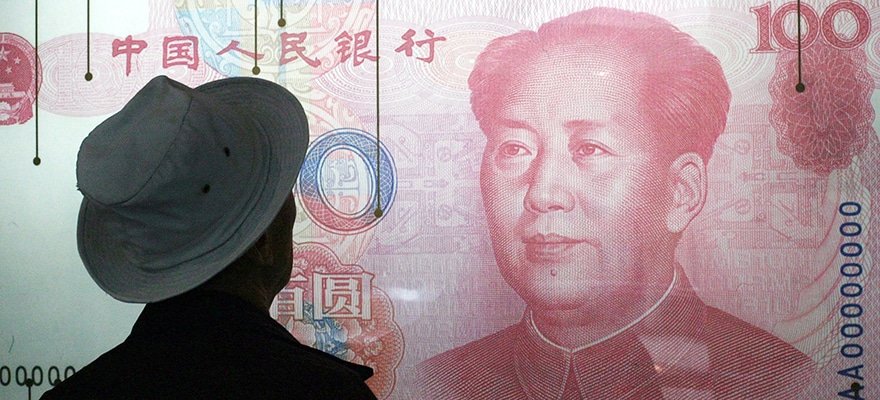We are at a critical juncture in the global economy. Most every economic headline that gets splashed across our screens details China's weakness, commodity price meltdowns and excessive Volatility in equities markets.
These are but a few of the many concerns plaguing investors, traders and speculators the world over. The Chinese yuan is under tremendous pressure. The authorities in Beijing, along with the People's Bank of China have moved swiftly to devalue the CNY to make Chinese exports more competitive on global markets.
Test your knowledge, win a prize! Take the Finance Magnates quiz...
This may bode well for China in terms of increasing its competitiveness, but it does not inspire confidence in the global community about the strength of the Chinese economy. With equities markets erasing trillions of dollars of value and an overly inflated ratio of 57 times earnings for most equities in China (the Shanghai Composite index and the Shenzhen Composite Index), the cracks run deep. Experts are anticipating that the CNY could depreciate by up to 10% during 2016, but the true figure could be far greater than that.
Global economic rout has its origins in China
Many emerging market economies have their own problems to deal with – separate from the China factor. For example countries like Nigeria, South Africa, Venezuela, Brazil, Turkey and others are now contending with things like inflationary pressures, political instability, capital flight, balance of trade problems, and weakening currencies as a result of a slowdown in global demand. This is in stark contrast to developed economies which have unusually low rates of inflation and are battling things like deflation or disinflation (consider the eurozone, Japan and the US as cases in point). There is no doubt in anyone's mind that the slowdown that began in China is rapidly spreading to all corners of the globe. The authorities have attempted to prop up the Chinese economy in every which way possible, deploying measures that free-market economies abhor. As a result of this pervasive weakness in China, investors are doing the first thing that comes natural to them: mass selloffs of assets across the board.
Multiple rate hikes expected in the US in 2016
And with respect to the Federal Reserve Bank and interest-rate hikes in the US, there is an expectation that interest rates will rise well over 1% by the end of 2016. This does not bode well for emerging market currencies either. As interest rates in the US increase and the dollar strengthens, investors tend to shy away from the volatility inherent in emerging market economies such as those found in Asia, Africa and Latin America, and they invest in developed economies like the US, Canada and the eurozone to name but a few.
We cannot ignore the devastating effect of oil price weakness on the global economy. With oil crashing below $30 per barrel, emerging market economies producing oil are reeling and their currencies reflect the reality of the situation.
How does a strong US dollar impact upon emerging market currencies?
Recall that the USD is the world's reserve currency, and despite other currencies playing a minor role in this arena it is the USD that takes pole position. Dollar-denominated assets such as oil, gold, copper and the like become relatively more expensive when the dollar appreciates. Recall that the dollar has been on the ascendancy for an extended period of time.
During this time we have seen the virtual collapse of the South African rand, the Turkish lira, the Brazilian real, the Chinese yuan (to a degree, since it is pegged to the US dollar), the Russian ruble and others. The global slowdown which began in China has now infected virtually every emerging market economy around the world. Gold prices and oil prices have declined and there is real concern among producers about how to proceed. The downtrend is likely to continue throughout 2016, and weakness will certainly extend for several quarters throughout the year.
The oil price is expected to rise however, with most banks and financial analysts placing an approximate price of between $40 and $65 per barrel of crude oil by the end of the year. That is of course if OPEC and WTI crude oil producers can agree to cut production so that demand has a chance to catch up to supply. Inventories must be depleted so that the present output capacity does not get stored in oil tankers and storage facilities throughout the world. We are also seeing increasing anxiety in the Middle East where stock markets throughout the region, with the exclusion of Iran, have plummeted in recent weeks.
There is simply too much pressure being brought to bear on the economies of Middle Eastern countries including the Gulf Arab states which are now having to cut social welfare programs, subsidies, and the like because there are budget deficits. Even contractors are not receiving Payments on time because government bodies simply don't have the money to pay them anymore. These realities are widespread and no longer isolated incidents in countries like Saudi Arabia, Qatar, Kuwait, Iraq and others.






















